Over the years, I’ve worked on over 200 design projects (although I haven’t done a full count in a while, so it’s probably more now!). In all that time, I’ve only worked with a handful that didn’t have some kind of space challenge in the nursery. Very few people purchase a home with a nursery in mind. Therefore, typically, the nursery is the smallest room in the house—a guest room, office, or even a corner of the master bedroom that needs to be converted. Even in more spacious rooms, the placement of doors and windows can create issues for the layout, especially since there are added safety concerns in nurseries.
Fortunately, more and more vendors are offering solutions to help with these common concerns, and pieces for small spaces are becoming easier to find. In addition, there are a few tips and tricks that I have discovered over the years that help to make space planning a nursery easier. Here are a few of my favorites…
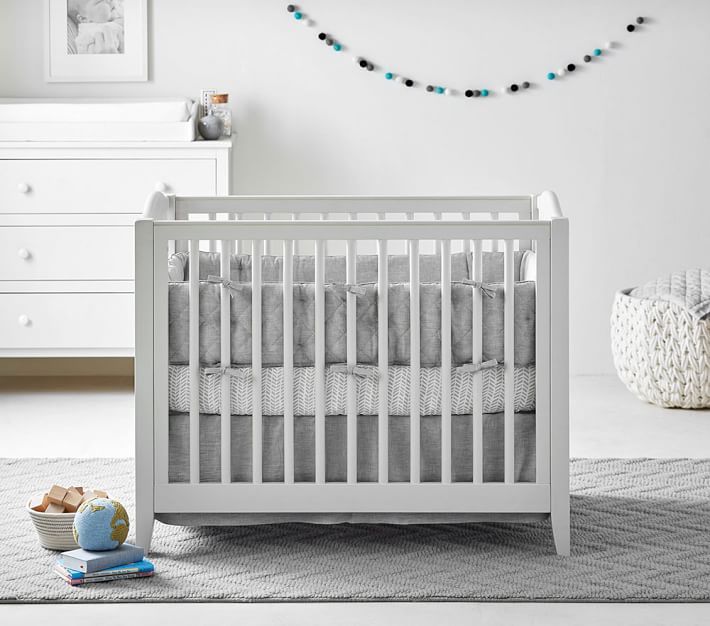 Emerson Mini Crib from Pottery Barn Kids
Emerson Mini Crib from Pottery Barn Kids
Mini Cribs
Mini cribs are a perfect solution for smaller spaces. The size of these pieces makes them usable for up to two years while saving a considerable amount of space. As an added bonus, a lot of mini cribs have casters on the feet, so you can roll them around the house to be used in different rooms. The smaller size makes this piece perfect for a corner of the master bedroom in place of a bassinet. You can then move the crib to the nursery when you’re ready to transition whereas regular size cribs are too large to fit through the door – eliminating this as an option. Do make sure to measure your doorway if you plan to do this, even for a mini crib! For more info on mini cribs, check out this post I wrote about some of my favorite ones.
Keep It Light and Bright
Dark colors can make a space feel smaller, so if you’re working with a small room, keep the walls a light color. Another way to enhance the brightness of a space is to utilize the natural light. If you have a window, keep the curtains open when you can. Add a table lamp or a floor lamp if your natural light isn’t great, and add a nice wall mirror to bounce the light around. Then, position furniture strategically to take advantage of the light.
Vertical Storage
Use your walls for storage! Walls are an underutilized area of most rooms. Vertical space is just as valuable as floor space! There are a lot of products now that are shallow enough so they don’t stick out into the room, but still provide much needed storage. Book ledges are a great option if you don’t have room for a bookcase. You can also make use of wall hooks, small wall cabinets and floating shelves.
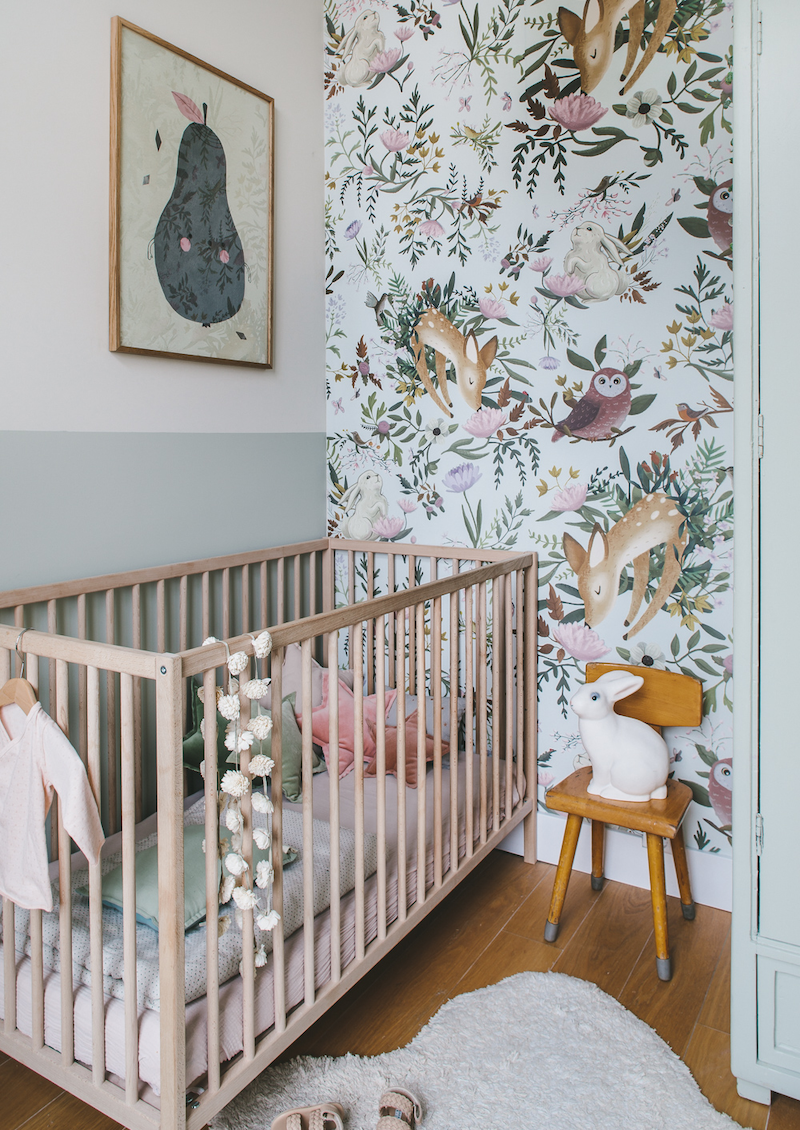 Nursery design by Room to Bloom
Nursery design by Room to Bloom
Use the Nursery For Sleeping Only
If your nursery space is really tight, you can always locate the changing station in the living room or bathroom. It’s not the most convenient, but it works in a pinch. You can also get creative with storage. For example, keep toys in a storage bench in the living room—I particularly like this idea because is accomplishes two things: 1. It keeps playtime in the rooms where you are more likely to be able to supervise, and 2. It provides the opportunity to teach your baby how to clean up and put toys away since they are in a shared area.
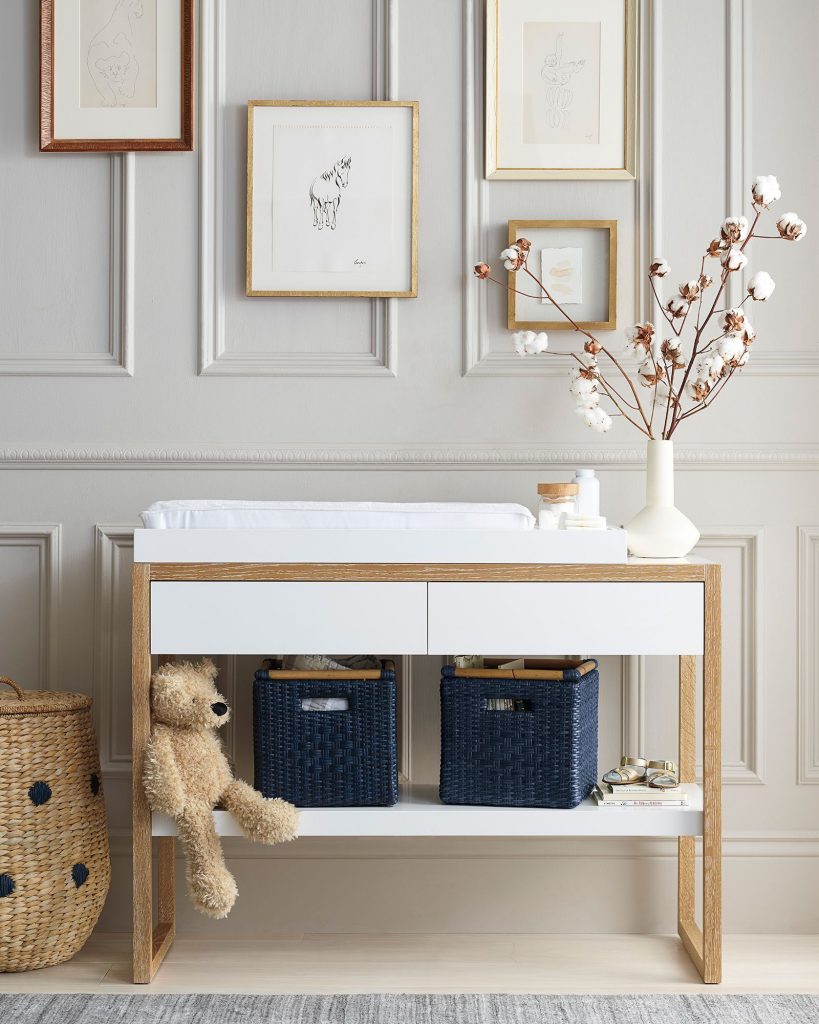 Nash Changing Table by Serena & Lily
Nash Changing Table by Serena & Lily
Keep It Organized
Clutter makes a room feel smaller. If you have a small space, keep it organized and clean! You can use boxes and bins to store toys and clothes, and keep things that are out folded and neat. Just make sure that placement is intentional and the the location of items works functionally for your needs.
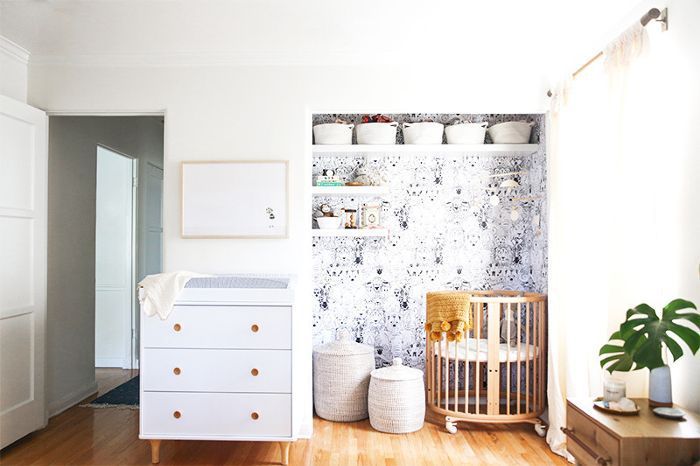 Max Wanger’s Nursery by Sarah Sherman Samuel
Max Wanger’s Nursery by Sarah Sherman Samuel
Maximize The Closet
Make use of every inch of closet space! You may need to adapt your closet to work functionally for your own nursery. To do so, add in an extra wardrobe bar, use some storage bins, and write out the type of items you need to store beforehand to determine the storage needs that work best for you (and keep in mind that it will change with baby). Flexibility is key!
Did you use any tricks for a small space nursery or kid’s room?
[This post was adapted from my original post for Gugu Guru]
[et_bloom_inline optin_id=optin_10]
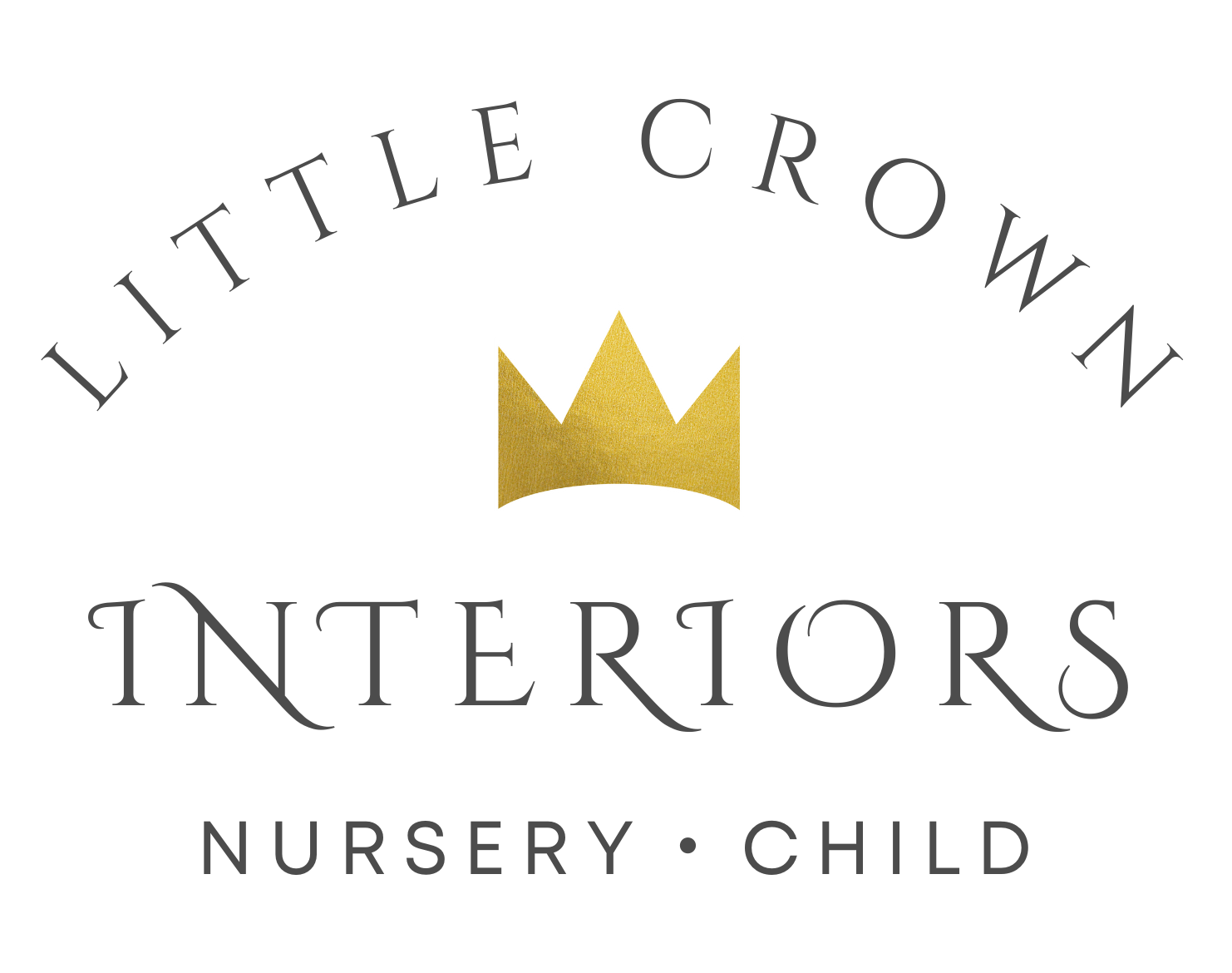

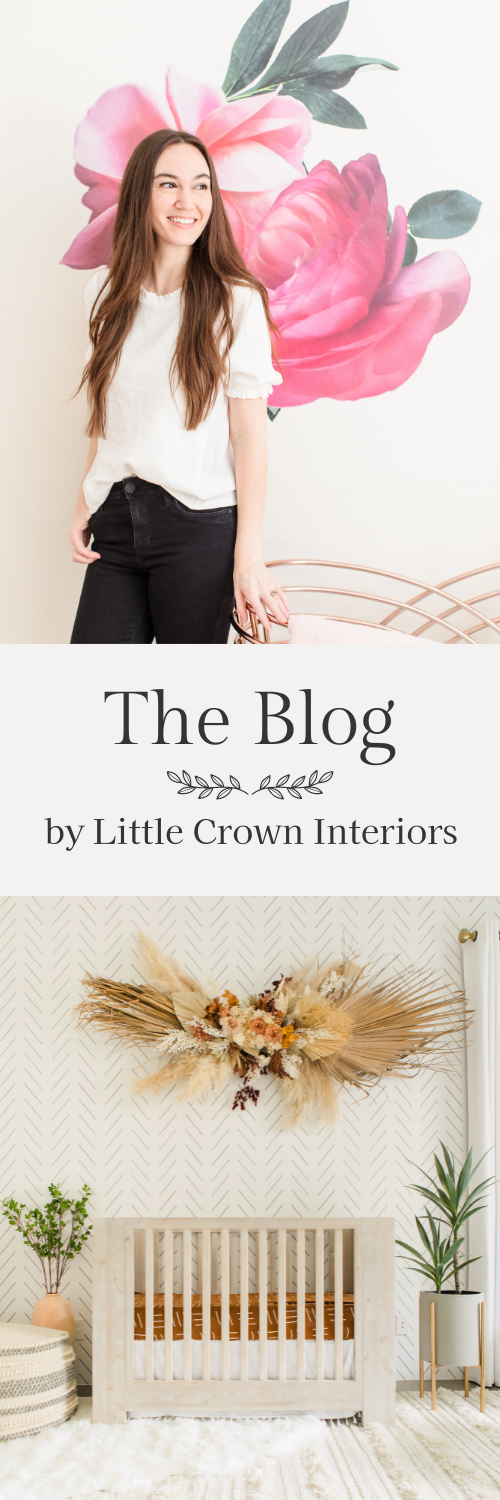
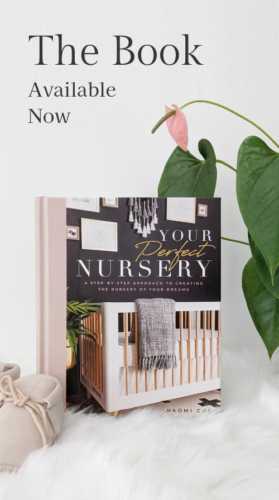
Hi! How much do you typically charge to do a full nursery?
Hello! If you wouldn’t mind filling out my design inquiry form, I’d be happy to give you all the details! https://littlecrowninteriors.com/interior-design-services/
Thank you!